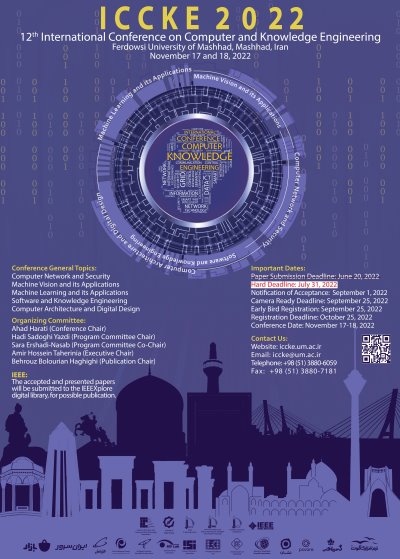0% Complete

Authors :
Keywords :
Abstract :
List of archived papers
Rojan Roshankar - Mohammad Reza Keyvanpour
Sina BaniasadAzad - Seyed Mohammadreza Mousavi mirkolaei
Mohammad Ali Javadzadeh Barzaki - Jafar Abdollahi - Mohammad Negaresh - Maryam Salimi - Hadi Zolfeghari - Mohsen Mohammadi - Asma Salmani - Rona Jannati - Firouz Amani
Sadegh Sulaimany Sulaimany - Yasin Amini
Mohammad Dehghani - Mohammad Manthouri
Mohammad Reza Kardoost - Mohammad Reza Moosavi - Reza Akbari
Rasoul Jafari Gohari - Laya Aliahmadipour - Ezat Valipour
Siavash Zaravashan - Sajjad Torabi - Hesam Zaravashan
Mahsa Keshtkar - Hooman Tahayori
Dara Rahmati - Mohammad Hadi Foroughi - Ali Bagherzadeh - Mehdi Foroughi - Saeid Gorgin




